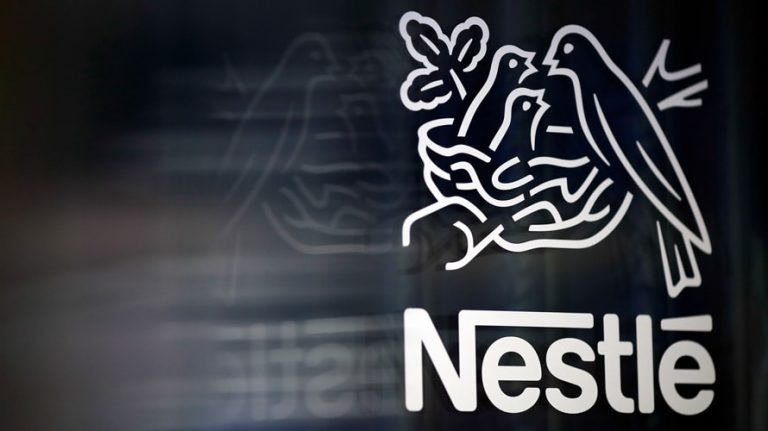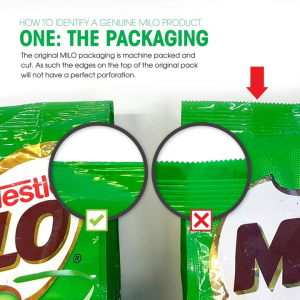
This article is written by Janhavi Sitaram Dudam who is pursuing a Diploma in Intellectual Property, Media and Entertainment Laws from LawSikho.
Table of Contents
Introduction
Nestlé is the world’s largest food and beverage company and operates in 197 countries. Nestle’s main topic of discussion at the European Union Intellectual Property Office’s (EUIPO) knowledge building and awareness conference was the impact of counterfeiting on the food industry, which has increased at an exponential rate over the last five years. Counterfeit foods and beverages are predicted to earn $49 billion in revenue each year. If this money came from a real source, the food and beverage industry would be ranked third in the world. The above discussion highlighted the importance of raising public awareness about the threat to the health of citizens of all ages.
Nestlé adheres to stringent quality and safety standards since the health and safety of its customers is a top priority. Counterfeit foodstuffs violate all quality standards and put consumers’ health and safety at risk by using unknown provenance ingredients. Furthermore, the counterfeit products mislead consumers and undermine brand trust, as well as undercut legitimate market share and profitability of businesses in this area, due to negative brand exposure via social media and the internet. So, in this article, we will discuss why Nestle has always made counterfeiting a high concern, and how they deal with it as a well-known brand. so, let’s dive right in.
Counterfeiting : meaning
Counterfeits are imitations of real products that are produced without the permission of the brand’s owner. Counterfeit items are typical of inferior quality than genuine goods, and they can even be harmful because they are frequently poorly constructed or made with hazardous or toxic substances and materials. Affixing the trademark or logo of a well-known consumer brand to a product, even if the product is not created or authorized by that brand, is also considered counterfeiting. Unfortunately, counterfeiting affects a wide range of well-known and successful businesses in almost every industry.
To keep production costs and sale prices low, counterfeit items are typically not produced with the same high-quality materials or under the same stringent manufacturing requirements as genuine ones. Counterfeits are frequently constructed with low-cost or hazardous materials, harmful chemicals, or are assembled wrongly. Consumers may have major health and safety issues depending on the nature of the counterfeit items, notably in the case of counterfeit baby formula, cosmetics, pharmaceuticals, and automobile parts.
Counterfeiting also harms a brand’s reputation and reduces consumer confidence in genuine products marketed and sold under the brand name, because if someone unwittingly buys a counterfeit product, believing it to be the genuine article, and the product is defective, they will blame the brand. However, the damage does not stop with brand owners and customers. Counterfeiting also deprives national economies of customs duties and tax revenues, as counterfeiters avoid paying the charges and taxes that legitimate producers and exporters pay.
Counterfeiters can now sell counterfeit items anonymously to avoid being detected thanks to the Internet. To encourage people to buy fake items, online merchants of fake goods use photos of actual goods, frequently copied directly from a brand owner’s website, to offer discounted products. Consumers are duped into believing the goods sold online at a low price are the real thing by using photos of the actual product. Consumers frequently discover they have been fooled into purchasing a counterfeit product only after receiving the items they purchased. Counterfeiters adjust their sales and shipping techniques regularly to avoid detection and legal problems.
Manufacturing and selling counterfeit products are illegal in most countries and can result in civil and/or criminal punishments. In general, brand owners can sue counterfeiters for damages and obtain injunctions (or court orders) to stop them from manufacturing and selling counterfeit items. Furthermore, in some countries, the government has the authority to punish and even imprison individuals or companies found guilty of selling counterfeit goods.
Counterfeiting in Nestle
-
Fake food seasoning manufacturing hub in China
“Nearly 50 factories were allegedly making fake versions of widely used culinary seasonings and sauces.,” according to a BBC report. The factories used ingredients that were inappropriate for human consumption, such as industrial salt, in seasonings including soy sauce and vinegar. “The seasonings, which include spices and chicken stock, are frequently used in Chinese cuisine and can be found throughout Asia,” the BBC article stated. Moreover, Brands like Maggi, Knorr, and Nestle were used to label the products.”
Various food scandals have rocked China in recent years, with poisoned milk powder killing six babies and harming more than 300,000 children in 2008.” According to the Beijing News, a “fake food seasoning manufacturing hub” in Duliu, near Tianjin, has expanded unchecked for more than ten years. Nearly 50 small shops in a residential area have been churning out fake seasoning valued up to 100 million yuan ($14.5 million) per year. According to photos and video captured on the scene, Workers package the products in filthy sheds with homemade equipment such as plastic barrels and garden hoses. According to reports, the factories used industrial grade salt that is unfit for human consumption. They were also seen using highly controlled substances like the artificial sweetener cyclamate and recycling by-products from other food makers. As a result of this incident, Nestle has criticised the “illegal counterfeiting of food and beverage products”. As a result, Nestlé China collaborates closely with authorities to detect and prosecute counterfeiters to protect customers.
-
Nestle’s Milo Scandal
In Negeri Sembilan, Malaysian officials seized RM250,000 (S$94,058) worth of counterfeit Milo chocolate drinks, forcing Nestle Malaysia to launch a campaign to educate its customers on how to recognise the real thing from the fake. The counterfeit products were ready to be delivered throughout the state, according to the Malay daily Utusan Malaysia. The raid in Mantin was carried out by the Ministry of Domestic Trade, Cooperatives, and Consumerism, according to the report. 1,000 empty boxes, 50,000 empty plastic packs, a printer, a weighing machine, and a numbering printer were also seized.
Nestle Malaysia launched a campaign after the raid to assist consumers to spot counterfeits of its trademark drink. It shared a photo on Facebook describing how to spot the difference between real and fake Milo packaging by looking at the perforation.
The real Milo packaging is machine packed and cut, according to the company, and the edges on the top of an original pack will not have precise perforation, unlike a fake. After this scandal, Nestle assured that “they are working together with the necessary authorities, particularly the Ministry of Domestic Trade, Co-operatives, and Consumerism, to address this issue, as the safety and quality of Nestlé’s product is a top concern.” Customers were also encouraged to contact the company’s customer service department if they purchased a counterfeit chocolate drink.
-
Societe Des Produits Nestle S.A & Anr V. Mohd Zahid And Sons & Ors
Nestlé, a globally recognized FMCG giant, filed a John Doe suit in the Hon’ble High Court of Delhi to prevent various third parties from enabling the illegal distribution, production, and sale of counterfeit NESCAFÉ instant coffee. Nestlé filed the present John Doe suit in the interest of its brand and the general public, who should be safeguarded from being exposed to counterfeit food products, and the Hon’ble High Court of Delhi approved it. Several factories were discovered to be counterfeiting food products during the raids conducted by the Local Commissioners.
The matter was recently brought before the Hon’ble Mrs. Justice Pratibha M. Singh, who, in light of the seriousness of the issue of food counterfeiting, requested to Ministry of Health and Family Welfare and the Food Safety and Standards Authority of India (FSSAI) to investigate the license status of the counterfeit manufacturers named in the suit and also identify measures that have been taken or could be taken to stop the sale of counterfeit food products detailed in the suit.
How can Nestle combat counterfeiting?
-
With the help of local authorities
The effectiveness of an anti-counterfeiting action is largely determined by the prior investigation. Right holders, on the other hand, frequently make the error of relying only on investigators for both the inquiry and subsequent legal action, without even contacting lawyers. While the investigator’s first role is critical for accurate target identification, legal action should always be commenced with the assistance of local IP litigators. This is necessary to ensure the best possible outcome of the proceedings because an investigator’s interest normally ends once a raid is completed, however, the case before the courts continues and, if not properly pursued, may result in adverse orders against the rights holder.
-
Use of anti-counterfeiting features
Preventative technology (e.g., radio frequency identification, microscopic tags, barcoding, license databases, unique identifying codes or holograms, and seals of authenticity) can help to keep counterfeit and pirated goods out of circulation. The usage of several features is advised as counterfeiting becomes more complex, this also aids in proving infringement to courts and authorities, as most counterfeits still fail to meet all of the requirements.
-
An initiative of government authorities
Counterfeiting is becoming more widely recognized by government authorities as a severe national security issue. The government recently took a significant step forward in this area by drafting a national IP rights policy and establishing a specialised cell for IP rights promotion and management to ensure that the policy is effectively administered and implemented. In conjunction with rights holders and legal practitioners, the cell has also conducted IP rights awareness and training programs for police, customs, and judicial academies, assisting them in better equipping and educating them to combat IP violations.
-
International collaboration program
The Central Bureau of Investigation in India has incorporated intellectual property as one of the conference’s modules, and Interpol has co-hosted training courses on combating unlawful international trade that has garnered enthusiastic support from trade associations and industry representatives. Various governmental and private organizations in India have also partnered with organizations like the International Trademark Association (INTA) and the International Chamber of Commerce’s Business Action to Stop Counterfeiting and Piracy to raise awareness about anti-counterfeiting and make it easier to enforce.
-
Keeping ahead of the game
To prevent counterfeiting, theft, and diversion, brand owners may use one or more security measures. Bad performers, on the other hand, will frequently nip at their heels. As a result, brands must evaluate their packaging and labeling activities on a regular basis, pay attention to consumer feedback, and regularly update security features. Brand owners should look to reliable vendors that are developing and implementing anti-counterfeiting technologies of the future to stay on top of these technologies.
Conclusion
To conclude, Nestle takes the initiative to combat counterfeiting on a regular basis, but we, as consumers, must also educate ourselves. We should avoid buying counterfeit items as consumers. Only in this manner will we be able to reduce the counterfeiting issue. Buying products directly from the brand owner or trustworthy retailers, rather than from individual third-party retailers or unknown or unrecognised websites, is the best way to avoid obtaining counterfeit goods. Also, remember that if a price appears too good to be true, it most likely is.
References
- https://www.inta.org/fact-sheets/counterfeiting-intended-for-a-non-legal-audience/
- https://www.bbc.com/news/world-asia-china-38646614
- https://www.foodnavigator-asia.com/Article/2015/03/16/Nestle-shows-consumers-how-to-tell-fake-Milo-after-counterfeit-bust
- https://www.latestlaws.com/intellectual-property-news/nescafe-instant-coffee-hc-asks-fssai-health-ministry-to-take-action-against-counterfeit-product-manufacturers-read-order/
- https://www.lexology.com/library/detail.aspx?g=3044c5a2-8329-4468-811c-649e523ee1e2
Students of LawSikho courses regularly produce writing assignments and work on practical exercises as a part of their coursework and develop themselves in real-life practical skills.
LawSikho has created a telegram group for exchanging legal knowledge, referrals, and various opportunities. You can click on this link and join:
 Serato DJ Crack 2025Serato DJ PRO Crack
Serato DJ Crack 2025Serato DJ PRO Crack



 Allow notifications
Allow notifications
